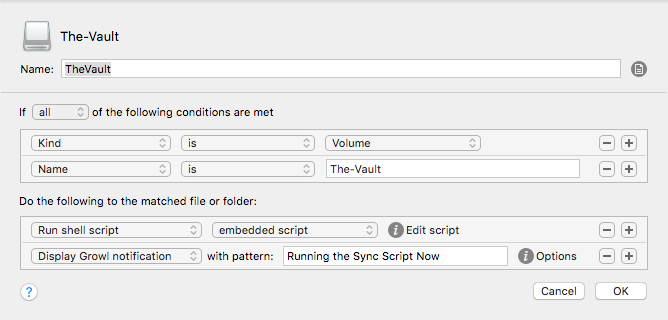There are many options when troubleshooting in FortiGate firewalls. ... Full Story
By Manny Fernandez
September 28, 2016

rsync in OS X
Recently, I purchased a 1TB 2.5″ SSD drive. The problem I was having was that I was worrying about the drive getting bumped and possibly losing data. Although I use Crashplan for long term archive, I like to back up my data on something local to ensure I can access it in a pinch or be able to seed the data and only restore the changes.
What I decided to use:
Standards based rsync built into OS X (Soon to be macOS )
Hazel
The hard drive contained a dmg file that is encrypted (500GB with the remaining 500GB unencrypted). When I connect the drive, it mounts the non-encrypted volume. I then double click on the dmg file where it prompts me for a password. Once entered, it mounts a second volume on the Mac.
Hazel is looking out for a volume named ’The-Vault’. Once it sees that volume mounted, it will launch the rsync “script”
rsync -rlptgoD /Volumes/Customer\ Files/ /Volumes/The-Vault/ClientBackup/

I added a Growl message just to keep me company 🙂
The ‘rsync’ calls the actual program.
-r, –recursive recurse into directories
-i, –itemize-changes output a change-summary for all updates
-p, –perms preserve permissions
-t, –times preserve times
-g, –group preserve group
-o, –owner preserve owner (super-user only)
-D same as –devices –specials
–devices preserve device files (super-user only)
–specials preserve special files
What this does in english:
Copies all files from /Volumes/Customer Files that are not already in ?Volumes/The-Vault/ClientBackup. It will keep the date, time and permission that the original files had.
This runs once, when the volume is mounted.
Recent posts
-

-

Have you ever had an IPS signature that continues... Full Story
-

Use case: Customer has a Split Tunnel Enabled but... Full Story
